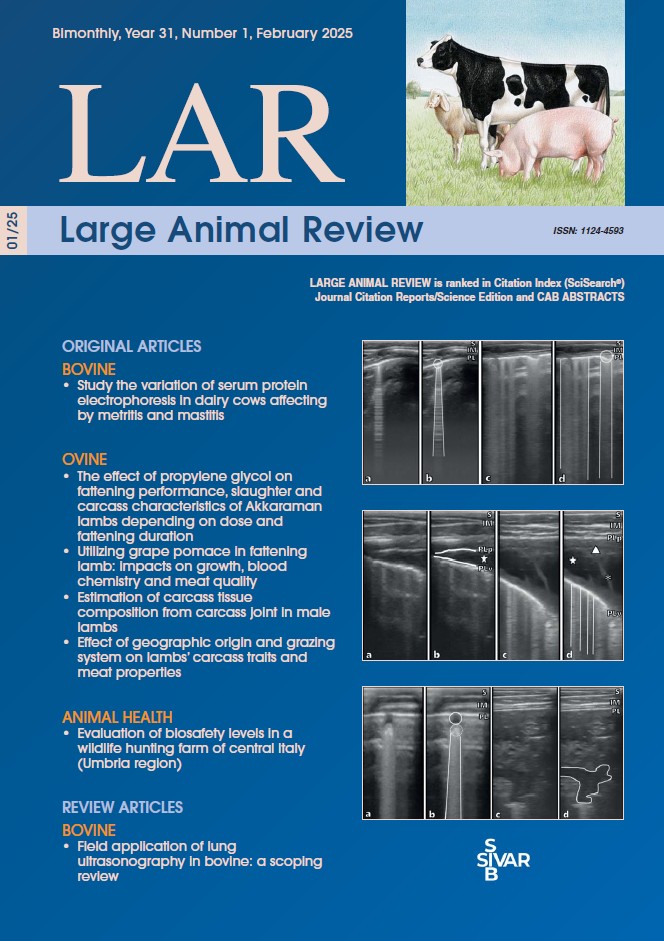The Effect of Propylene Glycol on Fattening Performance, Slaughter and Carcass Characteristics of Akkaraman Lambs Depending on Dose and Fattening Duration
Abstract
This study was conducted to determine the effect of Propylene Glycol (PG) on fattening performance, slaughter and carcass characteristics of Akkaraman lambs at different fattening periods. The animal material of the study consisted of 72 Akkaraman male lambs weighing approximately 20 kg at the age of 2,5-3 months. The lambs were divided into 3 groups (Control, PG1,5 and PG3) according to PG intake and slaughter days (60th, 90th and 120th days of fattening). The slaughter weights of the Control, PG1,5 and PG3 groups were 36.60, 37.89 and 38.81 kg on the 60th day of fattening, 47.13, 48.63 and 49.38 kg on the 90th day of fattening and 54.01, 57.66 and 60.05 kg on the 120th day of fattening (P<0.05), respectively. While the daily feed intake on the slaughter days from the beginning of fattening to the end of fattening were similar in all groups, the concentrate feed consumed for 1 kg of live weight gain values turned into an advantage for PG groups after the 70th day of fattening. This showed that PG intake had a positive effect on fattening performance after the 70th day of fattening. In order to increase fattening performance in Akkaraman lambs, it was determined that PG should be used at a dose of 3% of metabolic body weight (PG3) and for at least 3 months. In the early stages of fattening (60th day), testicular weight and ratio were higher in the PG3 group compared to the other groups (P<0.001). This indicates that the anabolic effect of PG is also short-period of fattening. Apart from this, it was determined that PG had no significant effect on slaughter and carcass characteristics. It was concluded that PG significantly affected carcass traits during the first 60 days of feeding, but this effect may have diminished in later periods due to metabolic homeostasis. Furthermore, the effect of PG on carcass traits varied for different carcass weights, probably due to the duration of metabolic exposure.


